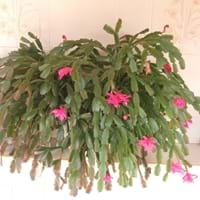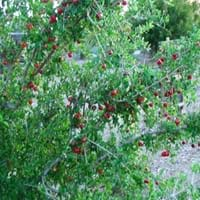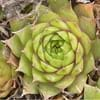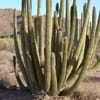Life Span
Perennial
Annual and Perennial
Type
Cactus or Succulent
Shrub
Origin
Brazil
Central America, South America
Types
Not Available
Not Available
Number of Varieties
Not Available
Habitat
Coastal Mountains, Humid climates
Dry areas, Well Drained, Woodlands
USDA Hardiness Zone
Not Available
9-11
AHS Heat Zone
12-10
Not Available
Sunset Zone
H1, H2, 16, 17, 21, 22, 23, 24
Not Available
Habit
Arching/Fountain-shaped
Thicket/Colonizing
Flower Color
White, Red, Orange, Pink, Salmon
Pink
Flower Color Modifier
Not Available
Bicolor
Leaf Color in Spring
Green
Light Green, Gray Green
Leaf Color in Summer
Green
Light Green, Gray Green
Leaf Color in Fall
Green
Light Green, Gray Green
Leaf Color in Winter
Green
Green
Plant Season
Fall, Winter
Spring, Summer
Sunlight
Partial Sun, Partial shade
Full Sun
Growth Rate
Medium
Medium
Type of Soil
Loam, Sand
Loam, Sand
The pH of Soil
Acidic, Neutral, Alkaline
Alkaline
Soil Drainage
Well drained
Well drained
Bloom Time
Fall, Late Fall, Early Winter, Winter
Spring, Summer
Tolerances
Not Available
Drought
Where to Plant?
Container, Ground, Pot
Container, Ground, Pot
How to Plant?
Stem Planting, Transplanting
Cuttings, Seedlings
Plant Maintenance
Medium
Medium
Watering Requirements
Average Water Needs, Do Not over Water, Never Over-water
Average Water Needs, Do Not over Water, Requires regular watering
In Summer
Lots of watering
Lots of watering
In Spring
Moderate
Moderate
In Winter
Average Water
Average Water
Soil pH
Acidic, Neutral, Alkaline
Alkaline
Soil Type
Loam, Sand
Dry, Sandy
Soil Drainage Capacity
Well drained
Well drained
Sun Exposure
Partial Sun, Partial shade
Full Sun
Pruning
Remove damaged leaves, Remove dead branches, Remove dead leaves
In Early Autumn, Prune in winter, Remove branches, Remove damaged leaves, Remove dead branches, Remove dead leaves, Remove dead or diseased plant parts
Fertilizers
All-Purpose Liquid Fertilizer
Complete balanced fertilizer, iron-rich fertilizer
Pests and Diseases
Red blotch
Aphids, Red blotch, Whiteflies
Plant Tolerance
Drought
Wind
Flower Petal Number
Semi-Double
Single
Foliage Texture
Bold
Medium
Foliage Sheen
Glossy
Glossy
Attracts
Not Available
Bees, Birds, Butterflies, pollinators
Allergy
Eye irritation, sneezing
Pollen
Aesthetic Uses
Beautification, Landscape Designing, Showy Purposes
Showy Purposes
Beauty Benefits
Not Available
Good for skin
Environmental Uses
Air purification
Air purification, Food for birds, Nesting sites for birds, Windbreak
Medicinal Uses
Not Available
Antioxidants, Arthritis, Diarrhea, Dysentry, Fertility, Fever, Inflammation, Kidney problems, scurvy, Urinary tract problems, Vitamin C
Part of Plant Used
Leaves
Flowers, Fruits, Leaves, Root
Other Uses
Decoration Purposes, Showy Purposes, Used as Christmas Tree, Used as Ornamental plant
Used As Food, Used as Ornamental plant, Used for making hedge
Used As Indoor Plant
Yes
Yes
Used As Outdoor Plant
Yes
Yes
Garden Design
Container, Hanging Basket, Houseplant, Tropical
Rock Garden / Wall, Wildflower
Botanical Name
SCHLUMBERGERA truncata
Malpighia emarginata
Common Name
False Christmas Cactus
Barbados cherry, West Indian cherry and wild crepe myrtle
In Hindi
False Christmas Cactus
Acerola Tree
In German
False Christmas Cactus
Acerola Baum
In French
Cactus de Noël
Acerola Arbre
In Spanish
cactus de navidad
Árbol de acerola
In Greek
False Christmas Cactus
Acerola Δέντρο
In Portuguese
flor de maio
Árvore acerola
In Polish
Szlumbergera ucięta
Acerola Drzewo
In Latin
False Christmas Cactus
Acerola ligno
Phylum
Magnoliophyta
Not Available
Class
Magnoliopsida
Not Available
Order
Caryophyllales
Malpighiales
Family
Cactaceae
Malpighiaceae
Genus
Schlumbergera
Malpighia
Clade
Angiosperms, Core eudicots, Eudicots
Angiosperms, Eudicots, Rosids
Tribe
Rhipsalideae
Not Available
Subfamily
Cactoideae
Not Available, Paperveroideae
Number of Species
Not Available
Not Available
Season and Care of False Christmas Cactus and Acerola
Season and care of False Christmas Cactus and Acerola is important to know. While considering everything about False Christmas Cactus and Acerola Care, growing season is an essential factor. False Christmas Cactus season is Fall and Winter and Acerola season is Fall and Winter. The type of soil for False Christmas Cactus is Loam, Sand and for Acerola is Loam, Sand while the PH of soil for False Christmas Cactus is Acidic, Neutral, Alkaline and for Acerola is Alkaline.
False Christmas Cactus and Acerola Physical Information
False Christmas Cactus and Acerola physical information is very important for comparison. False Christmas Cactus height is 30.50 cm and width 30.50 cm whereas Acerola height is 457.20 cm and width 243.84 cm. The color specification of False Christmas Cactus and Acerola are as follows:
False Christmas Cactus flower color: White, Red, Orange, Pink and Salmon
False Christmas Cactus leaf color: Green
Acerola flower color: Pink
- Acerola leaf color: Light Green and Gray Green
Care of False Christmas Cactus and Acerola
Care of False Christmas Cactus and Acerola include pruning, fertilizers, watering etc. False Christmas Cactus pruning is done Remove damaged leaves, Remove dead branches and Remove dead leaves and Acerola pruning is done In Early Autumn, Prune in winter, Remove branches, Remove damaged leaves, Remove dead branches, Remove dead leaves and Remove dead or diseased plant parts. In summer False Christmas Cactus needs Lots of watering and in winter, it needs Average Water. Whereas, in summer Acerola needs Lots of watering and in winter, it needs Average Water.





